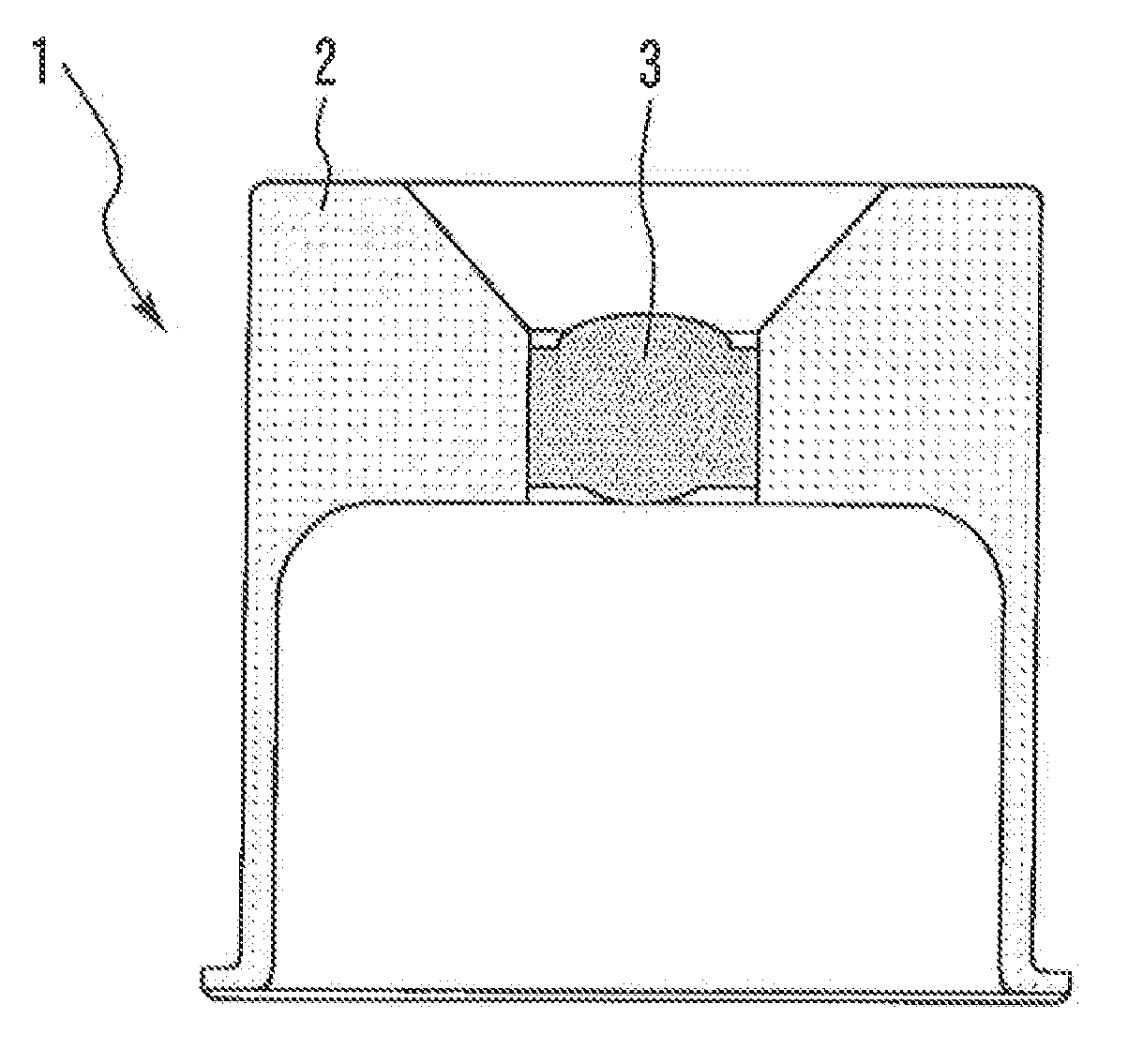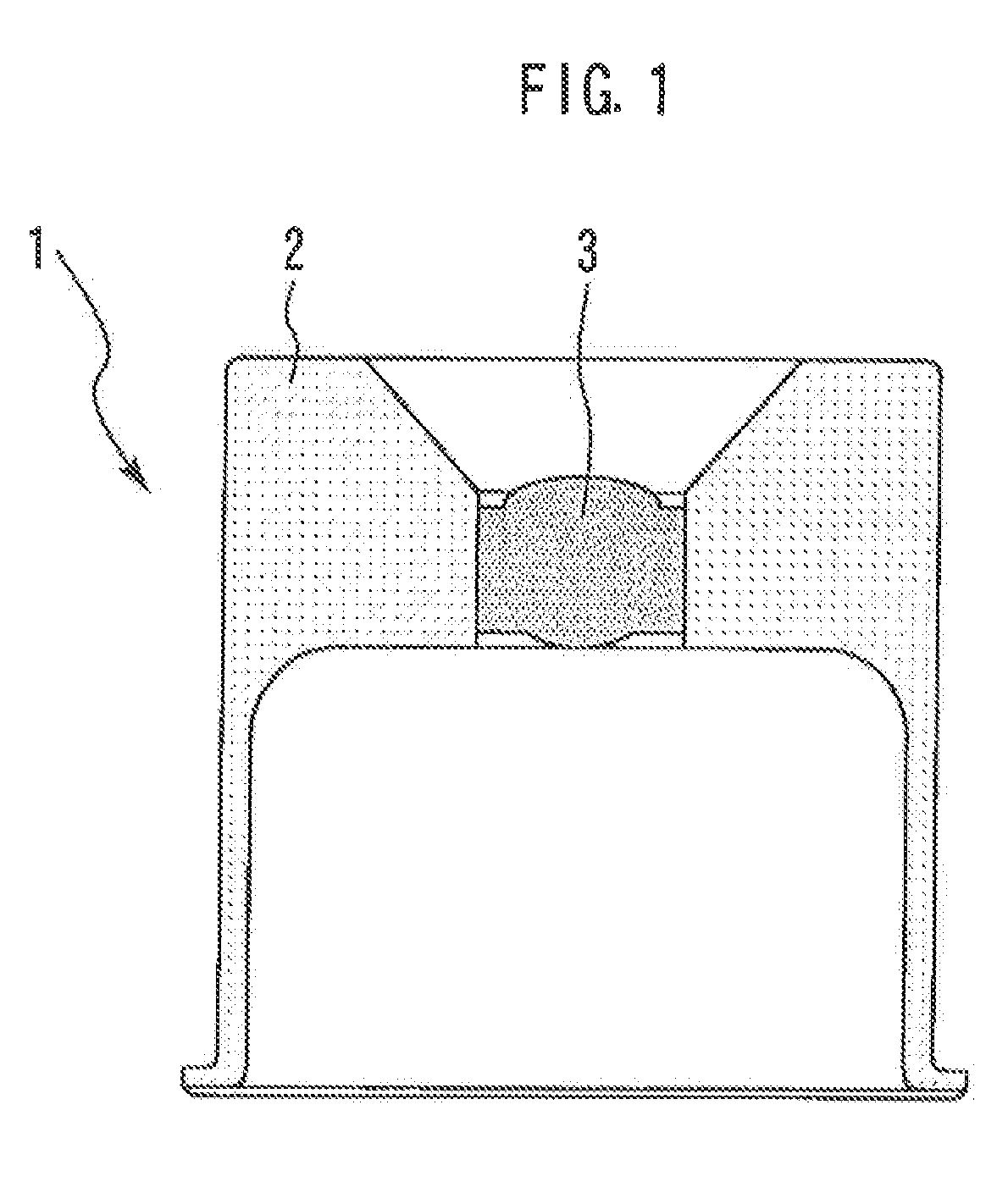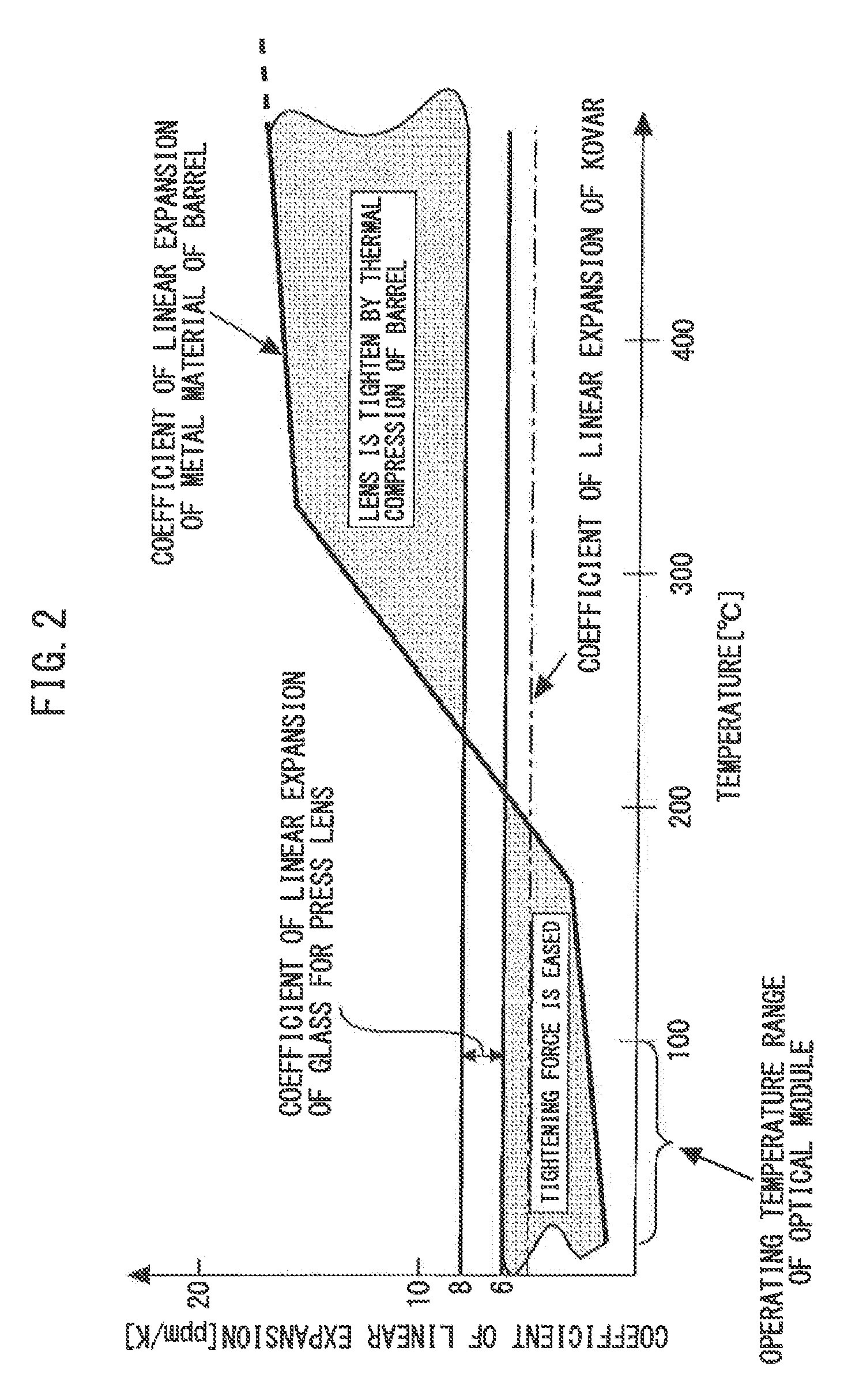Lens cap for optical module, optical module, and method for manufacturing lens cap for optical module
a technology for optical modules and lens caps, which is applied in the field of optical modules, and methods for manufacturing lens caps for optical modules, can solve the problems of deterioration of air tightness, increase of parts, and leakage, and achieve the effect of variable optical outpu
- Summary
- Abstract
- Description
- Claims
- Application Information
AI Technical Summary
Benefits of technology
Problems solved by technology
Method used
Image
Examples
Embodiment Construction
[0018]FIG. 1 is a cross-sectional view illustrating an optical module lens cap according to an embodiment of the present invention. An optical module lens cap 1 is provided with a barrel 2 and a press lens 3 held to the barrel 2. The barrel 2 is made of a metal material and the press lens 3 is made of glass. More specifically, the metal material is any one of invar, super invar and stainless steel invar (invar is a registered trademark of Aperam Alloys Imphy).
[0019]FIG. 2 is a diagram illustrating coefficients of linear expansion of the glass for the press lens and the metal material of the barrel. The coefficient of linear expansion of the glass has a relatively small temperature variation of 6 to 8 ppm / K. The coefficient of linear expansion of the metal material is 10 ppm / K or above at 150 to 800° C. (e.g., 10 to 15 ppm / K at 300° C.) and 8 ppm / K or less at 100° C. or below.
[0020]A method of manufacturing the above-described optical module lens cap 1 will be described. First, the b...
PUM
| Property | Measurement | Unit |
|---|---|---|
| temperature | aaaaa | aaaaa |
| distance | aaaaa | aaaaa |
| temperature | aaaaa | aaaaa |
Abstract
Description
Claims
Application Information
 Login to View More
Login to View More - R&D
- Intellectual Property
- Life Sciences
- Materials
- Tech Scout
- Unparalleled Data Quality
- Higher Quality Content
- 60% Fewer Hallucinations
Browse by: Latest US Patents, China's latest patents, Technical Efficacy Thesaurus, Application Domain, Technology Topic, Popular Technical Reports.
© 2025 PatSnap. All rights reserved.Legal|Privacy policy|Modern Slavery Act Transparency Statement|Sitemap|About US| Contact US: help@patsnap.com



